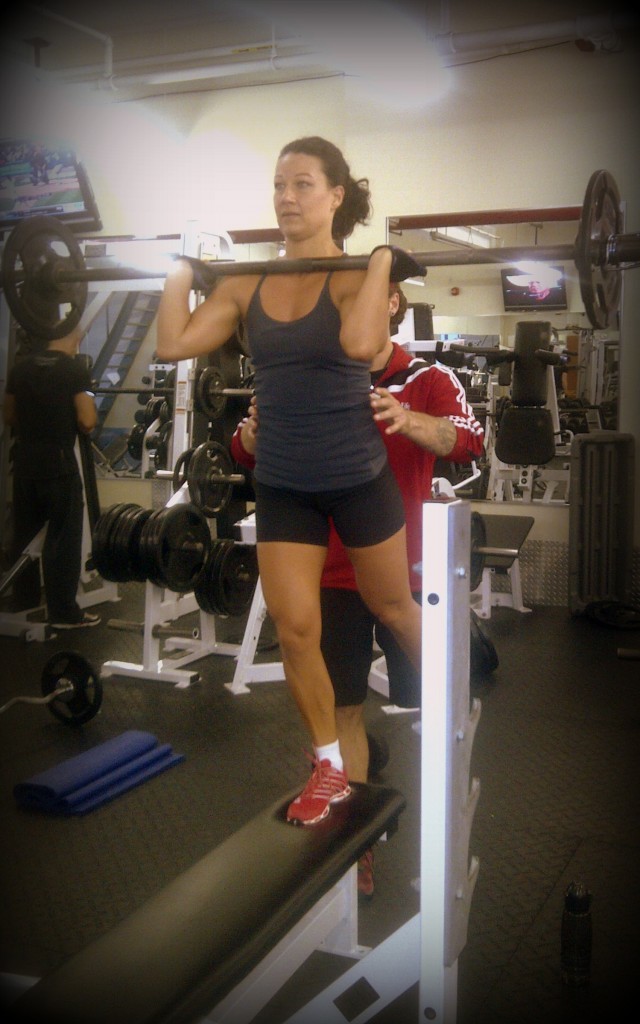To maintain a well-rounded fitness level, you should engage in all three components of physical activity: endurance (cardio), flexibility, and strength
Endurance (cardio) – 4-7 days a week
 Cardiovascular activity is exercise that primarily depends on the aerobic energy-generating process. Basically it means doing continuous activity that results in an elevated heart rate.
Cardiovascular activity is exercise that primarily depends on the aerobic energy-generating process. Basically it means doing continuous activity that results in an elevated heart rate.
Examples of cardio are running, cycling, swimming, step class, rowing, walking, and skipping rope. Circuit training (like we do in MYBootcamp) is also excellent for cardio!
You should aim to do cardio 4-7 times per week.
Benefits of Cardio Training:
- helps support weight loss
- makes your heart stronger
- helps reduce the risk of heart disease
- improves ability to perform daily activities
Flexibility – 4-7 days a week
 There are two types of flexibility techniques: static stretching and dynamic stretching. Static stretching involves holding a stretch for 20-30 seconds, quick rest, and then repeating the stretch 2-3 more times. The goal is to coax your joints into a greater range of motion (ROM). Dynamic stretching use dynamic movements through the full ROM of a joint. This method of stretching is best done before cardio training.
There are two types of flexibility techniques: static stretching and dynamic stretching. Static stretching involves holding a stretch for 20-30 seconds, quick rest, and then repeating the stretch 2-3 more times. The goal is to coax your joints into a greater range of motion (ROM). Dynamic stretching use dynamic movements through the full ROM of a joint. This method of stretching is best done before cardio training.
(Note: stretching should be done when the body is warm)
In addition to stretching, flexibility training also includes activities like yoga, pilates, and tai chi. You should aim to participate in flexibility training 4-7 times per week. (To be honest, this is an area I struggle in… I’m working to increase how often I do flexibility training).
Benefits of Flexibility Training:
- reduces risk of injury during exercise
- reduces stress in exercising muscles and releases tension
- assists with posture
- enhances performance in aerobic training and muscular conditioning
Strength – 2-4 days a week

Strength training involves working the muscles through resistance exercise. Muscle is an adaptable tissue. If you regular use and train them properly, you can develop strong(er) muscles, whereas if you don’t use them they can become smaller and weak.
Often many people don’t do strength training either because they are intimidated by the “juice monkeys” in the weight area or they (mostly women) think they’ll get super big muscles if they train with weights. I used to be one of those people who thought I would get really big muscles if I lifted heavy weights. Boy was I wrong! It actually takes a LOT of effort (and mostly because of diet) to build up muscle mass.
As well, strength exercises don’t have to be only with weights. Using your own body weight can be very effective as can using a resistance band. Make sure to add strength activities to your weekly schedule 2-4 times per week.
Benefits of Strength Training:
- improves core strength and posture
- improves resting metabolism
- having more muscle burns more fat
- reduces the incidence of joint and muscle overuse injury
Mix up the types of training throughout the week — don’t do all cardio in a row and then strength in a row — alternate the activities.
What about you? What’s your favorite exercise? What do you need to work on? Share in the comments section!


3 Responses